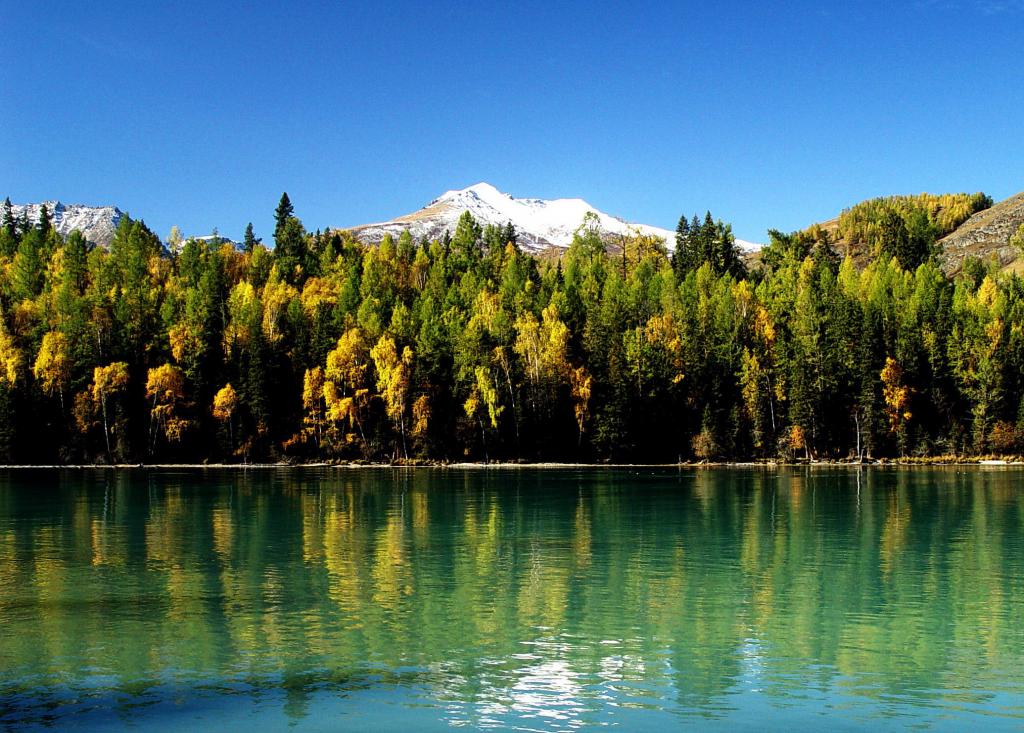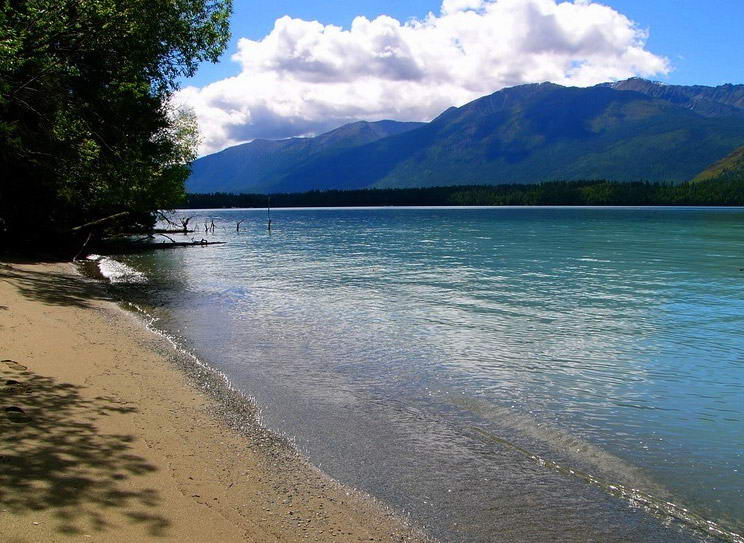search for a Trip
Located in Burqin County of Altay City within the Xinjiang Uygur Autonomous Region, and sharing borders with Kazakhstan, Russia and Mongolia, Kanasi Nature Reserve boasts a beautiful natural ecosystem formed by lakes, rivers, glaciers, forests, and grasslands.
 Hemu Village Kanasi, whose name means 'rich and beauty, mysterious and enigmatical' in Mongolian, might be the most alluring resort in northern Xinjiang. The highlight of Kanasi Nature Reserve would probably be Kanasi Lake. Originating from the Kanasi Glacier in Altay Mountain, the Kanasi River runs through the mountains for about 125 kilometers (77.7 miles) and Kanasi Lake is like a pearl shining on the beautiful river. The lake is 1,375 meters (4,511 ft) high above sea level and covers an area of 45.73 sq kilometers (11,300 acres). The color of Kanasi.
Hemu Village Kanasi, whose name means 'rich and beauty, mysterious and enigmatical' in Mongolian, might be the most alluring resort in northern Xinjiang. The highlight of Kanasi Nature Reserve would probably be Kanasi Lake. Originating from the Kanasi Glacier in Altay Mountain, the Kanasi River runs through the mountains for about 125 kilometers (77.7 miles) and Kanasi Lake is like a pearl shining on the beautiful river. The lake is 1,375 meters (4,511 ft) high above sea level and covers an area of 45.73 sq kilometers (11,300 acres). The color of Kanasi.
Wolong Bay Lake varies according to the seasons and weather. Sometimes it's blue, sometimes green, while sometimes it's as white as milk.
There are six bays along the Kanasi Lake and each of them holds a marvelous tale. A 'roche moutonnee', bedrock corroded by glaciers, can be found in the first bay. It looks like a sleeping sheep appreciating the beautiful lake and welcoming visitors from outside world. The second bay is the deepest point of the lake and also the place where monsters are often "spotted". It is said that some local livestock have been dragged into water by these monsters! The third bay is a nature platform for enjoying the marvelous lake, the fourth bay holds a lovely isle covered by trees, and a hill of magpies exists in the fifth bay. The sixth bay, which is at the end of the lake, is admired as a natural wonder by all visitors. Gathered here is a 2,000-meter
Moon Bay long (about 6,562 ft) bank of dead trees. No one can explain why these trees did not float downriver, but people say that it is because even the trees don't want to leave the beautiful Kanasi Lake. There is a pavilion named Fish Watching Pavilion on the other bank of Kanasi Lake. Because it is located on a hill, visitors can look down on the beautiful scenery of the whole area.


Besides Kanasi Lake, Wolong Bay (Crouching Dragon Bay) and Moon Bay are also attractions alluring many visitors and photographers. Virgin forests and flowery grasslands combined with clear green water make the whole area a paradise. At the intersection of Kanasi River and Hemu River lies the Hemu Grassland. It has been divided into two parts by the Hemu River running from northeast to southwest. Rare animals such as red deer, marmot and snowcocks live peacefully with cows and sheep.
Hemu Village is one of the three residences of the Tuva Mongol in China. The Tuva Mongol is believed to be the offspring of the troops of Genghis Khan when he crusaded west. The Tuva Mongol of Hemu Village lives in frame houses half-buried in the ground to resist the chillness of winter. They believe in Buddhism and have well preserved the traditional beliefs of their tribe.
Religious and traditional festivals are always jolly and busy, while the landscape tempts every visitor come back to experience the wildness of nature. Apart from the ancient Tuva Mongol, visitors also can enjoy the local customs and life with the hospitable Kazakh families in Hemu Grassland.
There are also many other attractions in the Kanasi Nature Reserve. Yaze Lake (Duck Swamp Lake), Double Lake, White Lake and Friendship Peak Glacier are also amazing. Visitors can fully enjoy the harmony of nature and human as well as the splendid scenery of the Kanasi Nature Reserve.
Related Tours:
China Attractions Guide
- Anhui Attractions
- Beijing Attractions
- Chongqing Attractions
- Fujian Attractions
- Gansu Attractions
- Guangdong Attractions
- Guangxi Attractions
- Guizhou Attractions
- Hainan Attractions
- Henan Attractions
- Hongkong Attractions
- Hubei Attractions
- Hunan Attractions
- Inner Mongolia Attractions
- Jiangsu Attractions
- Jiangxi Attractions
- Manchuria Attractions
- Ningxia Attractions
- Qinghai Attractions
- Shaanxi Attractions


